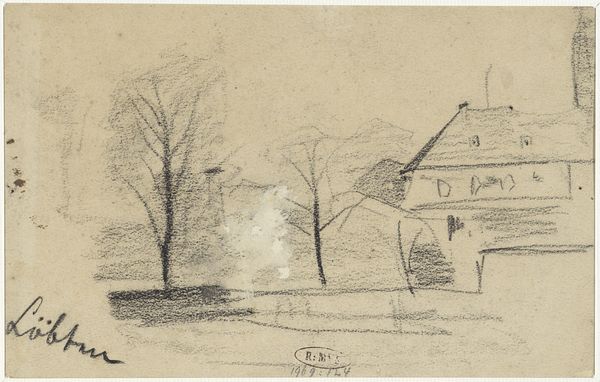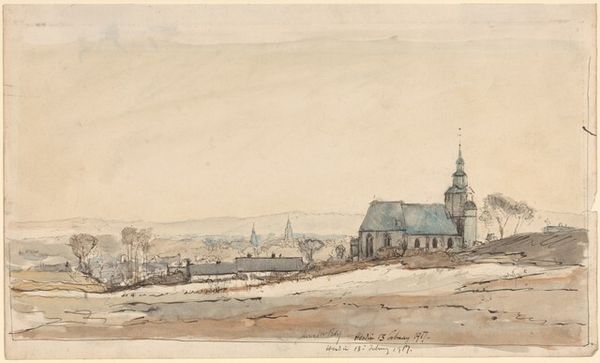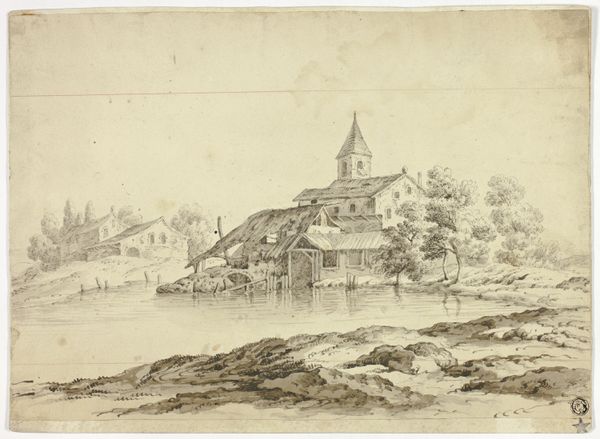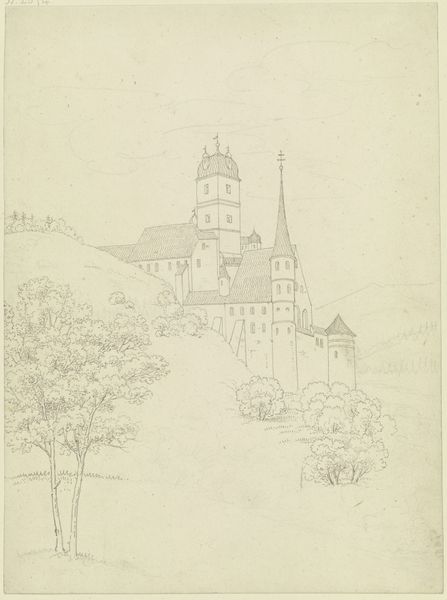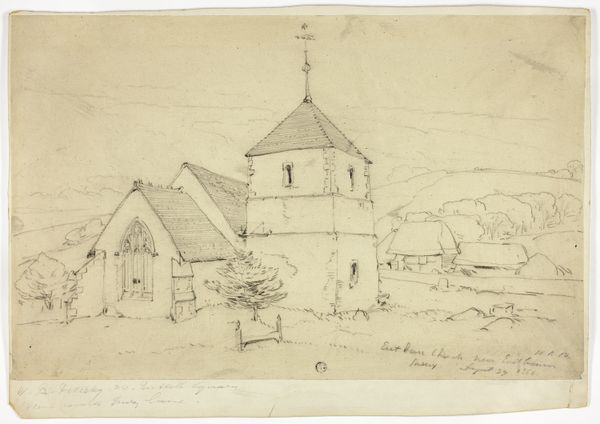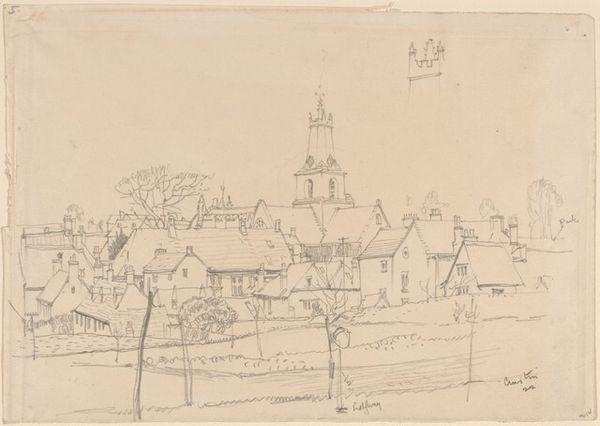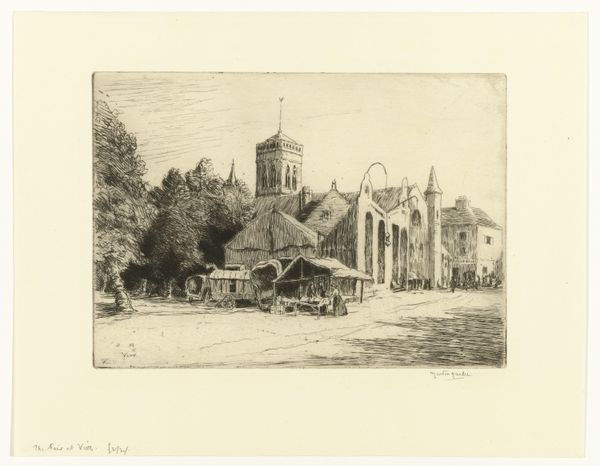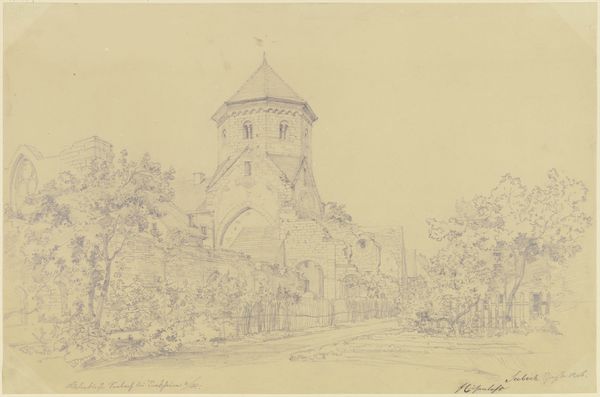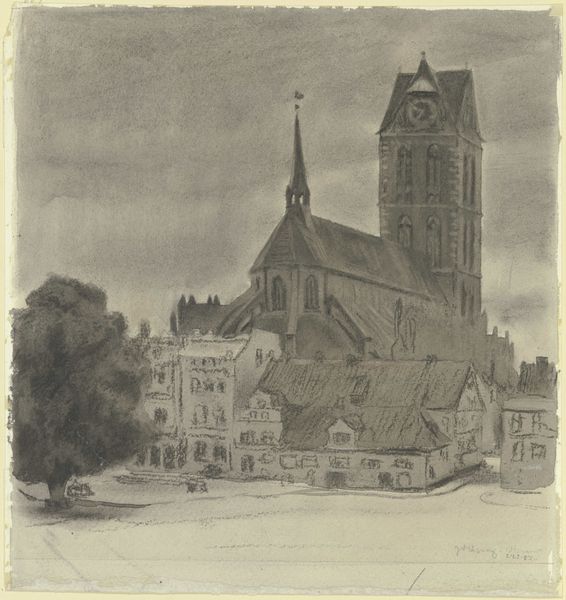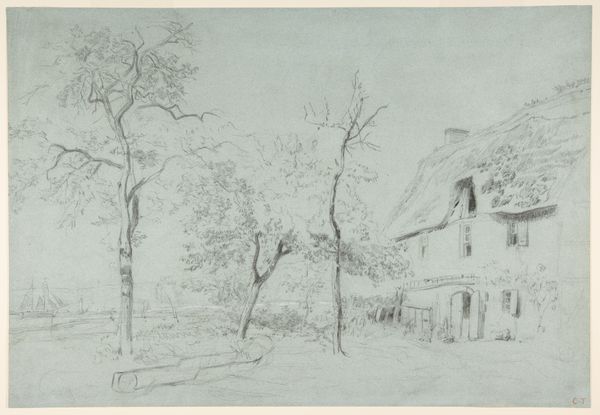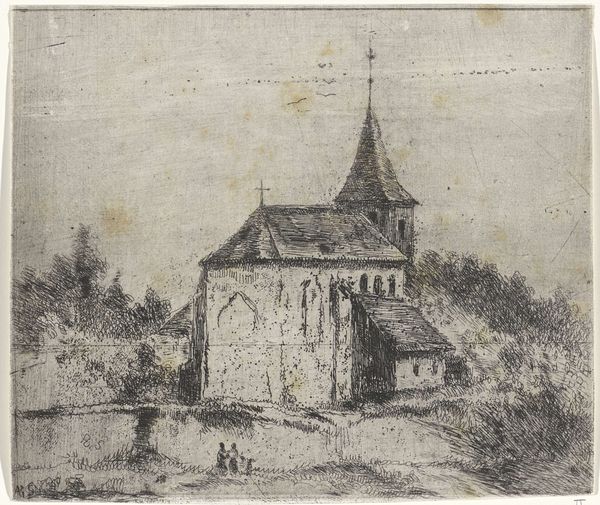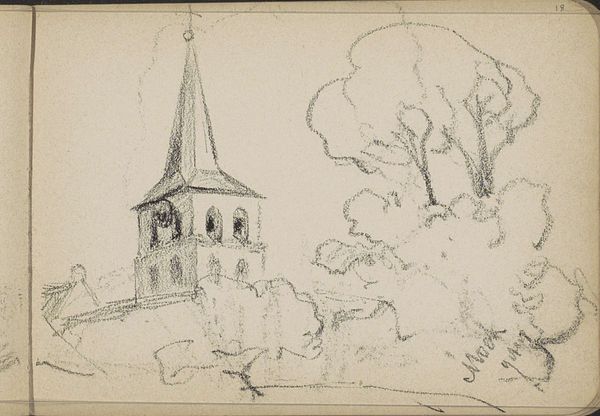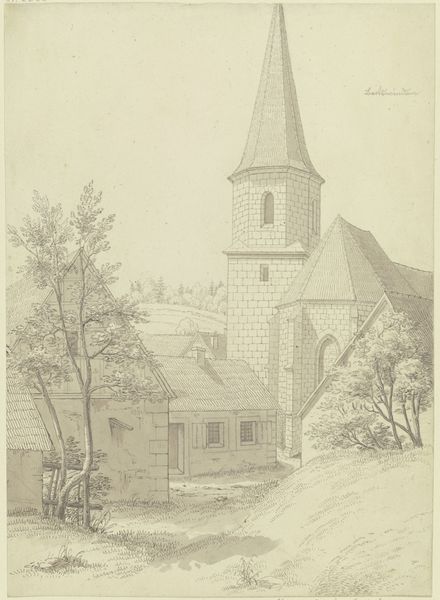
drawing, graphite-on-paper, paper, pencil, graphite
#
drawing
#
pencil sketch
#
landscape
#
graphite-on-paper
#
paper
#
pencil
#
graphite
#
cityscape
#
realism
Dimensions: 8 3/8 x 13 1/4in. (21.3 x 33.7cm)
Copyright: Public Domain
Editor: This is Walter Shirlaw's "Church at Polling," likely from the 19th century, created with graphite and pencil on paper. There's something incredibly serene and grounded about this cityscape, a kind of quiet dignity. What do you see in this piece from a historical perspective? Curator: I see a carefully constructed image playing with ideas of power and faith, as well as a record of a specific moment in time and artistic training. Consider how churches often served as the focal points of communities and visual symbols of authority. This drawing captures not just a physical space but a social landscape, with the church dominating the scene. Shirlaw's choice to render it in pencil suggests a conscious decision, steering clear of grand statements. What purpose does such medium serve, would you suggest? Editor: Maybe to create something more accessible, a slice of everyday life rather than a glorification? Or maybe a more intimate interaction with the viewer? Curator: Precisely! It allows the viewer a direct, unmediated connection, almost like a personal snapshot. Look at how the drawing almost merges architecture with its surrounding environment, giving little sense of its monumentality. This more approachable depiction would also coincide with changing artistic and social values during this time period. How might photography, a burgeoning medium at the time, influence sketches such as this one? Editor: That’s a good point! Photography was beginning to capture landscapes more directly, maybe pushing drawing towards more subjective or impressionistic interpretations. Curator: Yes! Instead of aiming for strict realism, artists start to examine more impressionistic and personalized depictions. Shirlaw here might be exploring a fleeting impression. Ultimately, the social position and consumption habits influence these depictions and artists' material choices. Editor: I never considered the societal role in what seemed like just a landscape. It’s amazing how historical context changes the way you interpret the art. Curator: Exactly, it makes us realize that art exists within and responds to these ever-shifting political and cultural conversations.
Comments
No comments
Be the first to comment and join the conversation on the ultimate creative platform.
